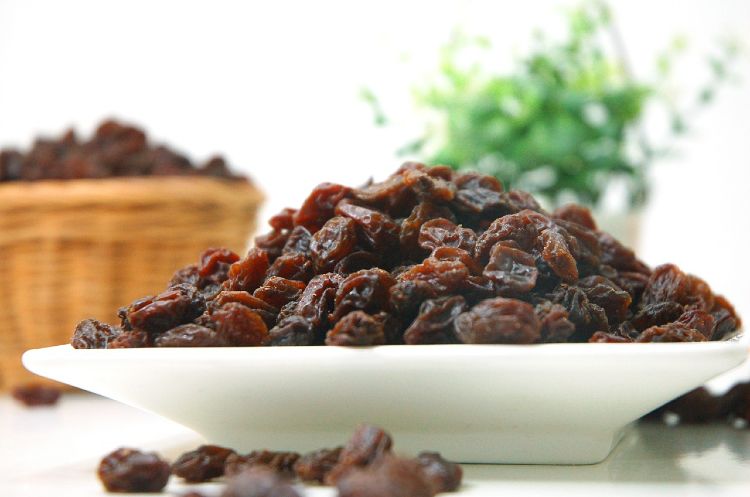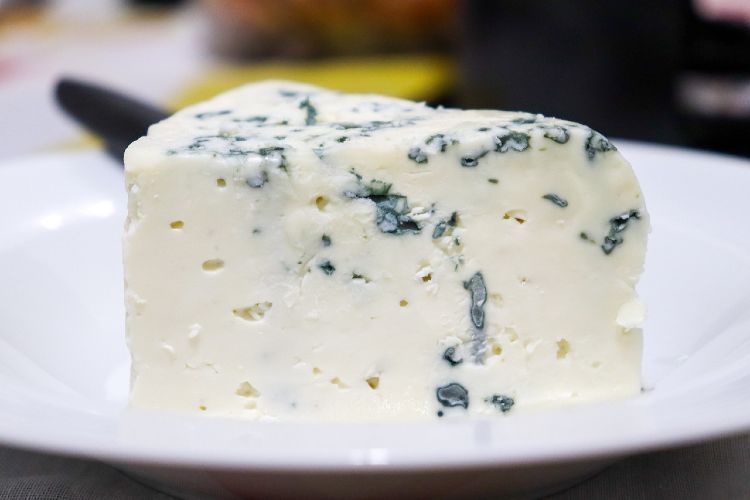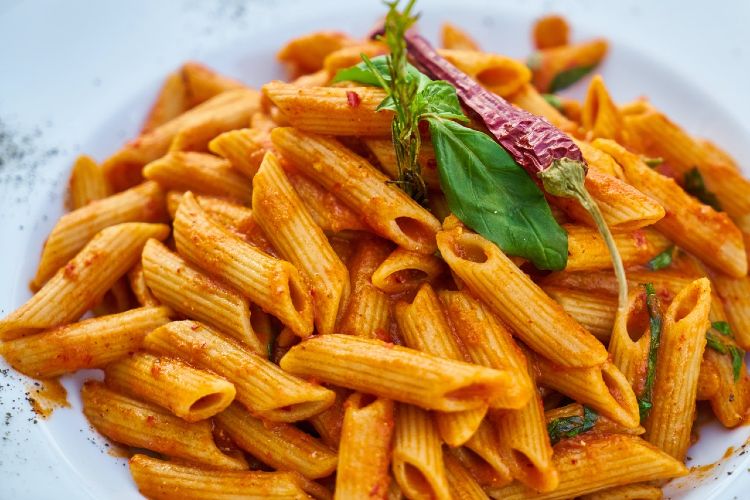Ditch The Monk, Keep The Sweet: Top Substitutes for Monk Fruit Sweetener
Monk fruit, also known as Luo Han Guo or Siraitia grosvenorii, is a small, round fruit native to southern China and northern Thailand. The sweetener derived from it is obtained by removing the seeds and skin, crushing the fruit, and then collecting the juice. This juice is typically processed into a granulated form that resembles traditional sugar, although liquid and powder versions also exist.
Monk fruit sweetener is gaining popularity due to its zero-calorie, zero-glycemic index attributes, making it a suitable alternative for those looking to reduce sugar intake without sacrificing sweetness.
List of Monk Fruit Sweetener Substitutes
Natural Substitutes
1. Honey
Honey is a natural sweetener produced by bees from the nectar of flowering plants. While it’s a traditional choice that has been used for thousands of years, it differs significantly from monk fruit sweetener in terms of composition and nutritional profile. Below, we examine the pros, cons, and best uses of honey as a substitute for monk fruit sweetener.
Pros
- Rich in Nutrients and Antioxidants – Honey contains small amounts of vitamins, minerals, and antioxidants, making it a more nutrient-dense option compared to other sweeteners.
- Pleasant Flavor Profile – Honey offers a warm, rich flavor that can enhance the overall taste of various foods and drinks.
- Easy to Find – Honey is widely available and can be found in almost all grocery stores, making it a convenient substitute for less accessible options like monk fruit sweetener.
- Versatile – Its liquid form and solubility make honey versatile for a range of culinary applications, from sweetening drinks to glazing meats.
Cons
- High Caloric Content – Honey is calorie-dense, with about 64 calories per tablespoon. This makes it less suitable for those watching their weight or on calorie-restricted diets.
- Affects Blood Sugar – Unlike monk fruit sweetener, which has a glycemic index of zero, honey does have an impact on blood sugar levels, making it less ideal for diabetics.
- Not Suitable for Infants – Honey should not be given to infants under one year old due to the risk of infant botulism, a form of food poisoning.
- Cost – High-quality, organic, or specialized types of honey like Manuka can be quite expensive.
2. Agave Nectar
Agave nectar, also known as agave syrup, is a sweetener made from the sap of the agave plant, native to the southern United States and Latin America. It has gained popularity as a natural sweetener and is often used as a vegan alternative to honey. Here, we’ll delve into the pros, cons, and best uses of agave nectar as a substitute for monk fruit sweetener.
Pros
- Vegan-Friendly – Agave nectar is plant-based, making it suitable for vegan diets as a substitute for honey or other animal-derived sweeteners.
- Low Glycemic Index – Agave nectar has a lower glycemic index compared to table sugar, which means it has a slower impact on blood sugar levels. However, this is largely due to its high fructose content, which comes with its own set of health concerns.
- Versatile – Its liquid form and neutral flavor make agave nectar versatile for use in a variety of culinary applications, from baking to beverages.
- Solubility – Agave nectar dissolves easily in liquids, hot or cold, making it convenient for use in beverages.
Cons
- High Fructose Content – Agave nectar is high in fructose, which can be problematic when consumed in large amounts. High fructose intake has been linked to various health issues like obesity, insulin resistance, and liver problems.
- Calorically Dense – Agave nectar is high in calories, offering around 60 calories per tablespoon, similar to that of honey.
- Expensive – High-quality, organic agave nectar can be quite costly compared to other sweeteners.
- Not Ideal for All Baking – Due to its liquid nature, using agave nectar in recipes originally calling for granulated sweeteners may require adjustments to the liquid content.
3. Stevia
Stevia is a popular natural sweetener derived from the leaves of the Stevia rebaudiana plant, native to South America. It has been widely used for centuries and has garnered a significant amount of attention due to its zero-calorie content and potent sweetness. Here, we will explore the pros, cons, and best uses of stevia as a substitute for monk fruit sweetener.
Pros
- Zero Calories – Like monk fruit sweetener, stevia is also calorie-free, making it an excellent option for those who are weight-conscious or on calorie-restricted diets.
- High Sweetness Potency – Stevia is incredibly potent, often up to 200-300 times sweeter than table sugar. This means you need very little to achieve the desired level of sweetness, making it cost-effective in the long run.
- Low Glycemic Index – Stevia has a glycemic index of zero, meaning it won’t affect your blood sugar levels. This makes it suitable for diabetics or those looking to maintain stable blood sugar levels.
- Versatile – Stevia comes in various forms, including liquid drops, powder, and granulated forms, offering versatility in a range of culinary applications.
Cons
- Aftertaste – Some people find that stevia has a slightly bitter or metallic aftertaste, which can be off-putting and might not be suitable for all recipes.
- Not Suitable for High-Heat Baking – Stevia can sometimes break down at high temperatures, meaning it may not be the best choice for recipes that require high-heat baking.
- Conversion Ratio – Due to its high sweetness potency, converting recipes from sugar or other sweeteners to stevia can be challenging and may require some trial and error.
4. Xylitol
Xylitol is a sugar alcohol derived from the fibers of various fruits and vegetables like berries, corn, and birch bark. It resembles sugar in crystalline structure and sweetness but has fewer calories and a lower glycemic index. Below, we discuss the pros, cons, and best uses of xylitol as a substitute for monk fruit sweetener.
Pros
- Lower Caloric Content – While not calorie-free like monk fruit sweetener or stevia, xylitol contains 40% fewer calories than table sugar, making it a decent option for those watching their caloric intake.
- Low Glycemic Index – With a glycemic index of 7, xylitol has a minimal impact on blood sugar, making it a suitable option for some people with diabetes.
- Similarity to Sugar – One of the key advantages of xylitol is its similarity to sugar in both taste and texture, making it an easy 1:1 substitute in most recipes.
- Dental Benefits – Unlike sugar, xylitol is not fermentable by mouth bacteria, so it doesn’t contribute to tooth decay. In fact, it’s often used in sugar-free gum for its dental benefits.
Cons
- Gastrointestinal Issues – Xylitol can cause gastrointestinal distress, including bloating, gas, and diarrhea, particularly when consumed in large amounts.
- Toxic to Pets – Xylitol is highly toxic to dogs and some other pets, causing rapid insulin release that can lead to hypoglycemia (low blood sugar). If you have pets, exercise extreme caution when using xylitol in your home.
- Cost – Xylitol can be more expensive than regular sugar, although it is generally less costly than monk fruit sweetener.
5. Erythritol
Erythritol is another sugar alcohol that’s often used as a sweetener. It occurs naturally in some fruits and fermented foods, but most of the erythritol used in the food industry is produced via fermentation of glucose from cornstarch. Let’s explore its pros, cons, and best uses as a substitute for monk fruit sweetener.
Pros
- Nearly Zero Calories – Erythritol contains only about 0.24 calories per gram, making it nearly calorie-free. This is advantageous for those on calorie-restricted or low-carb diets.
- Low Glycemic Index – Much like monk fruit sweetener and stevia, erythritol has a glycemic index of zero, making it suitable for those managing diabetes or watching their blood sugar levels.
- High Digestibility – Erythritol is well-tolerated and less likely to cause gastrointestinal issues compared to other sugar alcohols like xylitol.
- No Aftertaste – Erythritol is often praised for its clean, sugar-like taste without the bitter aftertaste that some other sugar substitutes have.
Cons
- Less Sweet Than Sugar – Erythritol is only about 70% as sweet as table sugar, so you may need to use more to achieve the desired level of sweetness, which could affect the texture and moisture content in recipes.
- Cooling Sensation – Some people notice a cooling sensation on the palate when consuming erythritol, which may not be desirable in all culinary applications.
- Not Safe for Pets – Similar to xylitol, erythritol is not safe for dogs and some other pets, so be cautious if you have animals in your household.
- Cost – Erythritol can be more expensive than regular sugar but is generally cheaper than monk fruit sweetener.
Less Common Substitutes
1. Coconut Sugar
Coconut sugar is derived from the sap of the flower buds of the coconut palm tree. It has gained popularity as a natural sweetener and is often touted as a healthier alternative to regular table sugar. Below, we explore the pros, cons, and best uses of coconut sugar as a substitute for monk fruit sweetener.
Pros
- Lower Glycemic Index – Compared to white sugar, coconut sugar has a lower glycemic index, which means it may cause a slower rise in blood sugar levels.
- Nutrient Content – While still a form of sugar, coconut sugar contains small amounts of nutrients like zinc, calcium, potassium, and short-chain fatty acids.
- Eco-Friendly – The production of coconut sugar is often considered more sustainable and environmentally friendly compared to the farming practices associated with cane sugar.
- Natural and Unrefined – Coconut sugar undergoes minimal processing and doesn’t contain artificial additives, which is attractive to those seeking natural alternatives.
Cons
- Caloric Density – Like regular sugar, coconut sugar is high in calories and can contribute to weight gain if consumed in excess.
- Cost – Coconut sugar is generally more expensive than both regular sugar and many other sweeteners, including monk fruit sweetener.
- Not a Low-Calorie Sweetener – Despite its “natural” appeal, it is not a low-calorie or low-carb option, which may not suit those on calorie-restricted or low-carb diets.
2. Maple Syrup
Maple syrup is a natural sweetener made from the sap of sugar maple trees. It’s especially popular in North American cuisine and is often used in a variety of dishes, from breakfast to desserts. In this section, we’ll discuss the pros, cons, and best uses of maple syrup as a substitute for monk fruit sweetener.
Pros
- Rich in Nutrients – Unlike many artificial sweeteners, maple syrup contains minerals like manganese, calcium, and zinc, as well as antioxidants.
- Complex Flavor – The flavor of maple syrup is not only sweet but also complex, with notes of vanilla, cinnamon, and even hazelnut, depending on the variety.
- Lower Glycemic Index Than Sugar – While it still raises blood sugar levels, maple syrup has a lower glycemic index than regular table sugar, leading to a less abrupt spike in blood sugar.
- Easy to Use – Its liquid form allows for easy mixing into a variety of foods and beverages.
Cons
- Caloric and Sugary – Maple syrup is calorie-dense and high in sugar, making it less suitable for those watching their weight or sugar intake.
- Not Ideal for All Cooking – The distinct flavor of maple syrup can overpower certain dishes, making it less versatile than some other sweeteners.
- Pricey – High-quality, pure maple syrup can be relatively expensive compared to other sweetening options.
- Storage – Once opened, it needs to be refrigerated and has a shorter shelf-life than some other sweeteners.
3. Date Sugar
Date sugar is a less common but increasingly popular natural sweetener made from dried, ground dates. Its fruity, caramel-like flavor makes it a unique substitute for traditional sweeteners, including monk fruit sweetener. Let’s delve into the pros, cons, and best uses of date sugar.
Pros
- Whole Food Sweetener – Date sugar is made from whole dates, making it a whole-food sweetener that retains the fiber and nutrients present in the fruit.
- Nutrient-Rich – Dates are rich in vitamins and minerals, including potassium and Vitamin B6, and date sugar retains some of these nutrients.
- No Additives – Date sugar typically contains no additives or preservatives, making it a pure, natural sweetener.
- Unique Flavor – The sweet, rich, and slightly fruity flavor of date sugar adds complexity to dishes and can complement a variety of flavors.
Cons
- Does Not Dissolve Well – The fibrous content of date sugar means that it doesn’t dissolve well in liquids, limiting its applications.
- High in Calories and Sugar – Like other sugar substitutes, date sugar is high in calories and natural sugars and should be consumed in moderation.
- Cost – Due to its natural and often organic origin, date sugar can be more expensive than other sweeteners.
- Limited Availability – It may not be as readily available as other sweeteners, requiring a trip to a health food store or an online purchase.
Artificial Substitutes
1. Aspartame
Aspartame is an artificial sweetener that’s widely recognized by its brand names, such as NutraSweet and Equal. Despite being one of the most studied food additives in the world, aspartame remains controversial. Here, we’ll dissect the pros, cons, and best uses of aspartame as a substitute for monk fruit sweetener.
Pros
- Zero Calories – Aspartame contains virtually no calories, making it a popular choice for those aiming for weight loss or maintenance.
- Significant Sweetness – Aspartame is around 200 times sweeter than sucrose (table sugar), which means only a small amount is needed to achieve the desired sweetness.
- Dental Benefits – Unlike sugars that can lead to tooth decay, aspartame doesn’t contribute to cavities.
Cons
- Not Suitable for Everyone – People with phenylketonuria (PKU), a rare genetic disorder, cannot metabolize phenylalanine, one of the amino acids in aspartame, and therefore should avoid it.
- Possible Aftertaste – Some individuals report a slight bitter or chemical aftertaste after consuming products sweetened with aspartame.
- Not Heat Stable – Aspartame can break down and lose its sweetness when exposed to high heat, making it unsuitable for some cooking and baking applications.
2. Sucralose
Sucralose is another artificial sweetener that’s known under the brand name Splenda. It is made from a process that begins with regular sugar (sucrose) but results in a compound that is around 600 times sweeter and non-caloric. Let’s examine the pros, cons, and best uses of sucralose as a substitute for monk fruit sweetener.
Pros
- Zero-Calorie Sweetener – Like aspartame, sucralose has zero calories, making it useful for those looking to reduce caloric intake.
- Heat Stable – Sucralose maintains its sweetness even at high temperatures, which means it can be used in cooking and baking without losing its sweetening properties.
- No Bitter Aftertaste – Many people find that sucralose lacks the bitter aftertaste that’s sometimes associated with other artificial sweeteners like aspartame.
- Long Shelf-Life – Sucralose is stable over time and does not easily degrade, giving it a longer shelf-life compared to some other sweeteners.
Cons
- Not Suitable for Certain Cooking Techniques – While heat stable, sucralose doesn’t caramelize, which can affect the outcome of certain recipes requiring this reaction, such as flans and crème brûlée.
- Gastrointestinal Discomfort – Some people may experience gastrointestinal discomfort, such as bloating or gas, when consuming products containing sucralose.
- Not Completely Absorbed – A small percentage of sucralose is absorbed into the bloodstream, which may be a concern for those strictly monitoring all caloric and nutritional intake.
3. Saccharin
Saccharin is one of the oldest artificial sweeteners available and is commonly known by the brand names Sweet’N Low, Sweet Twin, and Necta Sweet. Despite falling out of favor due to early health concerns, modern research has largely vindicated its safety for general consumption. Below, we discuss the pros, cons, and best uses of saccharin as a substitute for monk fruit sweetener.
Pros
- Zero-Calorie Option – Saccharin is calorie-free, making it a suitable alternative for those looking to cut back on caloric intake.
- High Sweetening Power – It is about 300 to 400 times sweeter than table sugar, meaning a little goes a long way, helping you achieve high levels of sweetness with a tiny amount.
- Long Shelf-Life – Saccharin is stable and has a long shelf-life, which makes it convenient for storage and use over extended periods.
- Heat Stability – It remains stable under a variety of conditions, including acidity and heat, making it versatile for various culinary applications.
Cons
- Aftertaste – One of the most common complaints about saccharin is its bitter or metallic aftertaste, which can be off-putting for some individuals.
- Not Suitable for All Cooking – While it is heat-stable, saccharin doesn’t possess the same bulking properties as sugar, making it a poor choice for recipes that rely on sugar for texture and volume.
- Limited Absorption – Most of the saccharin ingested is not absorbed by the gastrointestinal tract, which may be a concern for some consumers.
FAQs
Q1: Can I substitute monk fruit sweetener with regular sugar?
Answer: Yes, you can substitute monk fruit sweetener with regular sugar, but keep in mind that regular sugar has more calories and a higher glycemic index. The conversion is usually a 1:1 ratio, but this can vary based on the specific brand of monk fruit sweetener.
Q2: Is it necessary to adjust cooking times when using a different sweetener?
Answer: It depends on the substitute. Liquid sweeteners like honey and agave nectar may require reduced cooking times to avoid caramelization. Granulated substitutes typically don’t require adjustments to cooking times, but it’s always good to monitor your dish as it cooks.
Q3: What are the best monk fruit sweetener substitutes for baking?
Answer: Granulated substitutes like xylitol, erythritol, or coconut sugar are often recommended for baking due to their similar texture and moisture retention properties.
Q4: Do I need to change the amount of liquid in my recipe if I use a liquid sweetener?
Answer: Generally, yes. If you’re using a liquid sweetener like honey or agave, you may need to reduce the other liquids in your recipe to maintain the desired texture.
Q5: Are all monk fruit sweetener substitutes vegan-friendly?
Answer: Not all substitutes are vegan-friendly. Honey, for example, is an animal product. Stevia, agave nectar, and coconut sugar are examples of vegan-friendly substitutes.
Q6: Can I use monk fruit sweetener substitutes in beverages?
Answer: Yes, many substitutes like stevia, sucralose, and aspartame are excellent for sweetening beverages due to their high solubility and intense sweetness at low volumes.
Q7: Do all substitutes have the same shelf-life as monk fruit sweetener?
Answer: No, the shelf-life can vary significantly between products. Artificial sweeteners generally have a longer shelf-life than natural alternatives. Always check the expiration date and storage recommendations on the packaging.





